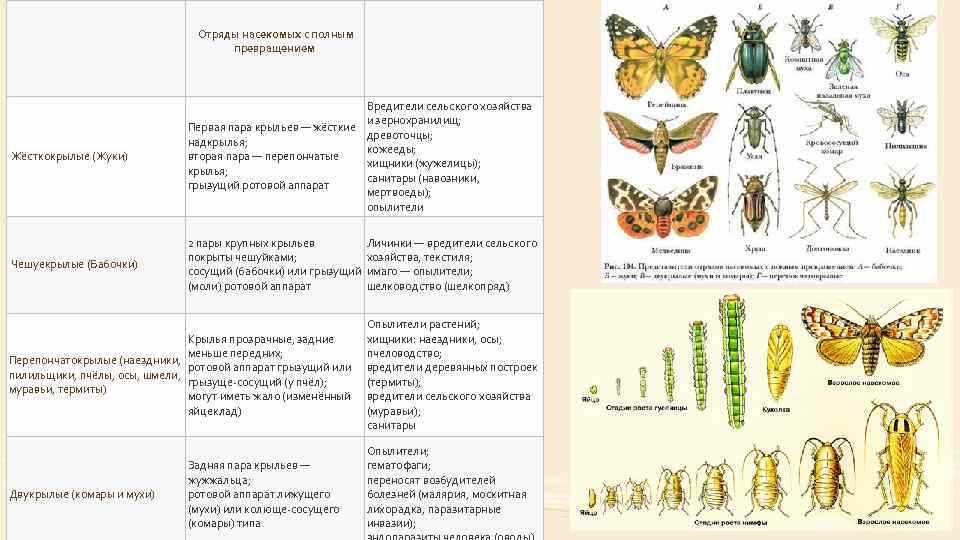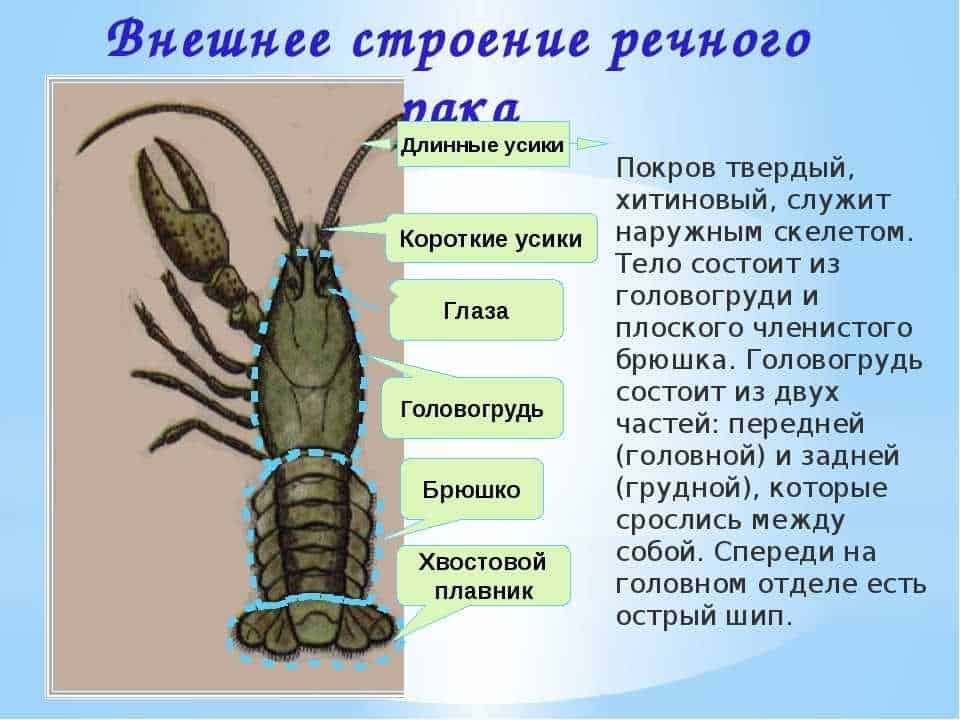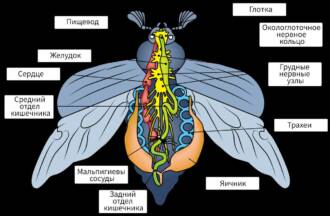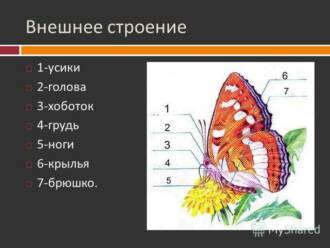
Butterfly antennae are small organs that play an important role in their lives. They are located on the head and consist of several segments. Butterfly antennae are sensory organs and perform several important functions.
One of the main functions of antennae in butterflies is orientation in space. Thanks to the antennae, butterflies can determine the direction of the wind, which helps them choose the right path when flying. The antennae also help butterflies navigate in the dark or in low light conditions.
Butterfly antennae also play an important role in finding food and breeding partners. Thanks to their sensitive antennae, butterflies can find flowers on which they can feed on nectar. They can also detect pheromones that other members of their species secrete and thus find breeding partners.
Thus, the antennae of butterflies are important organs that help them navigate in space, find food and partners for reproduction. They are an integral part of the life of butterflies and play an important role in their survival and reproduction.
Why does a butterfly need antennae
The antennae of butterflies are an important organ that performs several functions. They help butterflies navigate in space and find food.
Orientation
Butterfly antennae contain special receptors that help them navigate their environment. Thanks to the antennae, butterflies can determine the direction of movement and the presence of obstacles. This is especially important during flight when they must avoid collisions with other objects.
Food detection
The antennae also help butterflies find food. Due to their sensitivity, they can detect odors and flavors in the air and on surfaces. The antennae allow them to find nectar plants and other butterflies for breeding. This is especially important for butterflies, which spend most of their lives in flight and depend on having enough food.
In general, the antennae of butterflies perform important functions in providing them with orientation and food detection. These organs help butterflies survive and reproduce successfully in their habitat.
Functions and meaning of antennae in butterflies
The antennae of butterflies are an important sensory organ and play a key role in their daily lives. They have several functions and meanings for these beautiful insects.
Feeling the environment
Butterfly antennae allow them to sense their environment, such as air currents, temperature, and humidity. Due to the sensitivity of the antennae, butterflies can determine the direction and strength of the wind, which helps them plan their flight and avoid obstacles.
Orientation and foraging
The antennae also play an important role in butterflies' spatial orientation and food search. Thanks to the antennae, butterflies can determine the presence of nectar in flowers and determine the distance to them. They can also use their antennae to detect pheromones given off by other butterflies, which helps them find breeding partners.
Protection and disguise

Butterfly antennae can also serve for defense and camouflage. Some butterflies have antennae that look like insect antennae to distract predators and give the illusion of danger. In addition, the antennae can serve as camouflage, allowing the butterflies to blend in with their surroundings and remain undetected by predators.
In general, the antennae of butterflies are an integral part of their life cycle and play an important role in their survival and reproduction. They help butterflies navigate their environment, find food, and protect themselves from predators. Without antennae, butterflies would be much more vulnerable and limited in their abilities.
The role of antennae in orientation in space

The antennae of butterflies play an important role in their orientation in space. They serve as a kind of "antennae" that help the butterfly determine the direction of movement and the distance to objects in the environment.
Butterfly antennae contain many sensory receptors that respond to various physical and chemical signals. Because of this, butterflies can sense changes in wind, temperature, and humidity, as well as recognize pheromones released by other members of their species.
The antennae also help butterflies to navigate in space and find food. They allow the butterfly to determine the direction of the scent and identify the food source. Thanks to the antennae, the butterfly can easily find flowers and other plants on which it can find nectar.
It is important to note that the antennae of different species of butterflies can vary in size, shape and structure. Some species of butterflies have antennae that are highly branched, which increases their surface area and makes them more sensitive to their environment. Other types of butterflies have simpler and smaller antennae, but they still perform their function in spatial orientation.
How antennae help butterflies find food

Butterfly antennae play an important role in finding food. They are a kind of sensory organs that help the butterfly find and identify the source of food.
Butterfly antennae contain many receptors that detect chemicals in the air. These substances can be flower scents, other insect pheromones, or plant scents. Thanks to the antennae, the butterfly can smell and follow the smell of food.
The antennae also allow butterflies to determine the presence or absence of food in a particular location. Due to its sensitivity, the butterfly can detect even small traces of food that other insects or animals could leave.
In addition, antennae help butterflies to determine the quality and freshness of food. They can detect chemicals that indicate the state of the food, such as putrefaction or fermentation. This helps the butterfly choose only the freshest and healthiest food.
Thus, the antennae of butterflies are an indispensable organ for finding and identifying food. They help the butterfly find and select the right food needed for its survival and reproduction.
Antennae and Communication in the Butterfly World
Butterfly antennae are an important means of communication in their world. These small outgrowths on the head of butterflies play a key role in transmitting information and interacting with other individuals.
Organs of hearing and smell. The antennae of butterflies perform the function of the organs of hearing and smell. They allow butterflies to perceive sounds and smells, which are important signals for them. Thanks to the antennae, butterflies can determine the presence of danger, find food and a breeding partner.
Communication using antennas. The antennae of butterflies also play the role of a means of communication between individuals. Butterflies use their antennae to transmit various signals, such as signals to attract attention or danger signals. They can move their antennae, change their position and shape in order to convey a specific message to other butterflies.
Basis for chemical exchange of information. Butterfly antennae also play an important role in chemical communication. At the ends of the antennae are numerous receptors capable of detecting various chemicals. Because of this, butterflies can exchange pheromones, which are special chemicals that transmit important signals for attracting a mate and marking territory.
Why do butterflies have two sets of antennae
The antennae of butterflies are an important sensory organ and play a key role in their behavior and survival. Butterflies have two sets of antennae - sensitive antennae and brush antennae - each with a different function.
Sensitive Antennas
Sensitive antennas in butterflies are long and thin stems, at the ends of which there are numerous segments. These tendrils serve mainly for touch and detection of the environment. Due to their sensitivity, butterflies can detect the presence of food, breeding partners, danger or obstacles in their path.
racemose antennae
The brush-like antennae of butterflies are located on the front legs and look like small bristles. They perform the function of taste and help butterflies to determine the quality of food. The racemose antennae contain receptors that respond to chemicals such as pheromones and allow butterflies to find suitable food and breeding partners.
Thus, butterflies' two sets of antennae provide them with information about the world around them and help them survive and reproduce. They play an important role in the life of these beautiful insects and are an integral part of their anatomy.
Antennae and protection from predators
The antennae of butterflies play an important role in their defense against predators. Because of their structure and function, antennae help butterflies survive in the harsh natural world.
Orientation in space. Butterfly antennae contain many sensory receptors that help them navigate their environment. Thanks to this, butterflies can determine the direction of air currents, the distance to objects, and even detect chemicals in the air. This information allows them to avoid danger and find food.
Hazard warning. Butterfly antennae can serve as a signaling organ that warns of possible danger. Some species of butterflies have bright colors and patterns on their antennae that signal to predators that they have toxic or unpleasant tastes. Thus, the antennae help butterflies to avoid being attacked by predators.
disguise and imitation. The antennae of some species of butterflies may have special shapes and colors that help them camouflage themselves as other animals or objects in the environment. For example, the antennae of some butterflies can mimic the antennae of ants to scare away or hide from predators. This allows the butterflies to evade danger and increases their chances of survival.
Features of the antennae in different types of butterflies
The antennae of butterflies are an important sensory organ that performs several functions. They help butterflies navigate space, find food and breeding partners, and detect and warn of danger.
Antennae of different butterfly species may vary in length, thickness, shape, and color. For example, some butterflies may have long, thread-like antennae, while others may have short, club-shaped antennae. Such differences may be related to the lifestyle and needs of each species.
Butterfly antennae are made up of several segments, each with a different function. For example, the first segment of the tendrils is called a rolling pin and serves to smell odors. The remaining segments of the antennae help the butterfly navigate in space and determine the temperature of the environment.
Butterfly antennae can also be covered with fine hairs that help them perceive sounds and vibrations. This allows the butterflies to detect danger and learn about the presence of partners in the environment.
In general, the antennae of butterflies are an important sensory organ that helps them survive and reproduce successfully. They are one of the unique adaptive traits of these beautiful insects.
The evolution of antennae in butterflies

The antennae of butterflies are an important organ that plays a role in their life cycle and interaction with the environment. The development and evolution of antennae in butterflies are associated with adaptation to various conditions and changes in the environment.
Initially, the antennae of butterflies were simple and short, performing the main function of smelling and tasting. However, over time and evolutionary changes, they have become more complex and diverse, which has allowed butterflies to better adapt to different environmental conditions.
Antennae in butterflies can have a different shape and structure. Some species of butterflies have elongated and filiform antennae that help them navigate in space and find food. Other species of butterflies may have areal antennae with numerous bristles to help them gather information about their environment.
The evolution of antennae in butterflies is also related to their important role in the reproductive process. Butterfly antennae play a role in collecting information about potential partners and helping them find a suitable spouse. They can serve not only as an organ of smell, but also help in communication between males and females.
Interesting facts about butterfly antennae

1. Antennae in butterflies are an important organ of touch. Thanks to the antennae, the butterfly can determine the shape, size and texture of objects that are in its environment. The antennae contain many sensitive receptors that help the butterfly navigate in space and find food.
2. Butterfly antennae also play an important role in navigation. Butterflies use their antennae to determine direction and distance to a target. They can sense changes in the airflow and use this information to move in the right direction.
3. Butterfly antennae can be of different shapes and sizes. Some butterflies have antennae with bright and expressive feathers that can be used for mimicry or to attract the attention of a mate. Other butterflies have filament-like or tangle-like antennae that can be useful for distinguishing between species or interacting with the environment.
4. Butterfly antennae can detect chemicals. The antennae contain many receptors that allow the moth to detect chemicals such as pheromones that are used to communicate with other members of its species. Thanks to their antennae, butterflies can find breeding partners and identify places where there is food or danger.
5. Butterfly antennae may be damaged or missing. In some cases, moth antennae may be damaged or missing. This can happen due to injury or external factors. However, antennae are an essential survival organ for butterflies, so their absence or damage can greatly reduce their chances of surviving in the wild.
Preservation and protection of antennae in butterflies

The antennae of butterflies play an important role in their life and survival. They not only help butterflies find food and breeding partners, but also warn them of possible dangers. Therefore, the preservation and protection of antennae is an integral part of their life cycle.
Saving antennae in butterflies
Butterfly antennae are very fragile and sensitive to external influences. To keep them in good condition, butterflies carefully fold them along the body when they are dormant. This helps to protect the antennae from damage and maintain sensitivity.
Butterflies can also use their antennae to protect themselves from enemies. Some species of butterflies have antennae that look like the eyes of predators. This allows them to intimidate predators and draw their attention away from their vulnerable body.
Butterfly antennae protection
Butterfly antennae can be exposed to a variety of threats such as spiders, birds, and other insects. To protect their antennae, butterflies may use a variety of tactics.
Some species of butterflies have hairy antennae that serve as additional protection. These hairs help repel predator attacks and prevent damage to the antennae.
Other types of butterflies may have antennae coated with special substances that repel predators. These substances can have an unpleasant odor or taste, which makes predators give up their attempt to attack.
In general, butterflies have various ways of maintaining and protecting their antennae. They adapt to their environment and use their antennae to detect danger and notify other butterflies of a possible threat.






